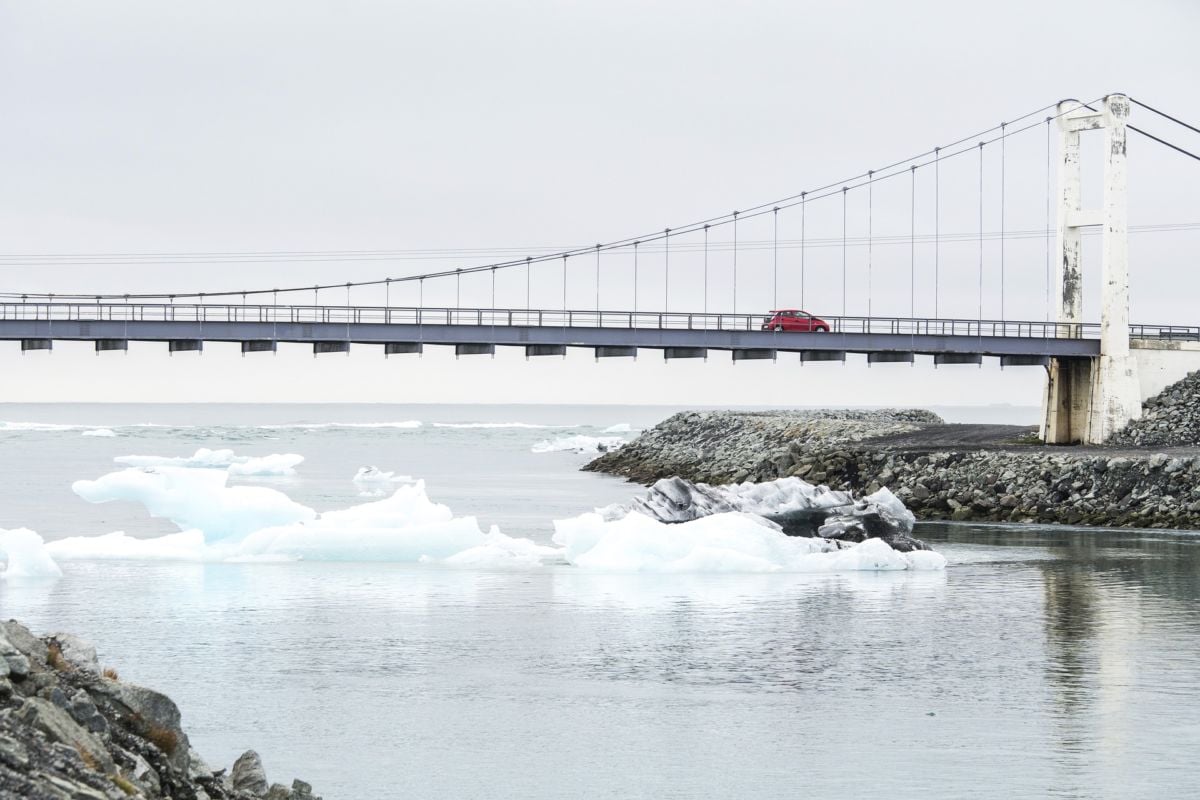Part of the Series
Covering Climate Now
In winter 2018, the sea ice extent in the Bering Sea reached the lowest levels observed since 1850, when records began. By late April, warm, southerly winds left sea ice levels at just 10% of the 1981–2010 average for that time of year. In recent research, scientists studied how the unprecedentedly low ice cover affected ecosystems in the region.
As sea ice melts in the spring, it releases fresh water and nutrients into the ocean, seeding phytoplankton blooms that serve as the base of food webs. Researchers call the cascading connections between sea ice cover and the abundance of organisms in ecosystems the oscillating control hypothesis. This process has long been studied in the southeastern Bering Sea, where sea ice levels have contracted or expanded in accordance with multiyear temperature patterns, but not in the northern Bering Sea, which has never experienced a complete lack of winter sea ice.
Typically, springtime ice in the northern stretches of the sea keep ocean bottom temperatures low even at the height of summer, when a “cold pool” typically covers more than 70% of the continental shelf, making the northern reaches cold even when the south is warm. But the northern Bering Sea was not insulated during the winter of 2018, and by the following summer, the cold pool had virtually vanished. The unusual conditions gave Duffy-Anderson et al. a chance to find out whether the oscillating control hypothesis might serve as a model for trophic cascades in the northern ecosystem as well.
The researchers used satellite-based measurements of sea ice levels and collected data on ocean temperatures, salinity, oxygen levels, and fluorescence between late April and mid-October 2018. They also took biological samples or biomass estimates of phytoplankton, zooplankton, fish larvae, adult fish, and seabirds.
The team found that the springtime bloom of phytoplankton was delayed and that plankton levels remained low, which led to a low abundance of large zooplankton, though small zooplankton thrived. Samples of larval walleye pollock — one of the world’s largest fisheries — indicated that the larval stage of fish was largely unaffected. However, the authors reasoned that the changes in their food supply may still affect the larvae’s ability to survive long term. Indeed, estimates of pelagic foragers, including pollock, herring, and capelin, in later stages of development revealed that fish stocks were below average. Observations of seabird colonies indicated smaller populations, decreased reproductive success, and a greater risk of die-off events.
Ultimately, the authors conclude that the cascading ecosystem effects seen in the northern Bering Sea in 2018 were similar to those previously observed in the southeastern region of the sea. They caution that unique aspects of the northern Bering Sea ecosystem, including a different light regime and a northward shift of adult fish populations, could mean its response won’t be exactly the same, however. Still, the model from the southeastern Bering Sea could provide researchers with important insights about what’s in store for the northern region in a warming world. And researchers may soon have the opportunity to find out if the similarities between the regions hold up over the long-term with Bering Sea ice levels nearly reaching record lows again in winter 2019.
This story is part of Covering Climate Now, a global collaboration of more than 250 news outlets to strengthen coverage of the climate story.
Join us in defending the truth before it’s too late
The future of independent journalism is uncertain, and the consequences of losing it are too grave to ignore. To ensure Truthout remains safe, strong, and free, we need to raise $43,000 in the next 6 days. Every dollar raised goes directly toward the costs of producing news you can trust.
Please give what you can — because by supporting us with a tax-deductible donation, you’re not just preserving a source of news, you’re helping to safeguard what’s left of our democracy.
